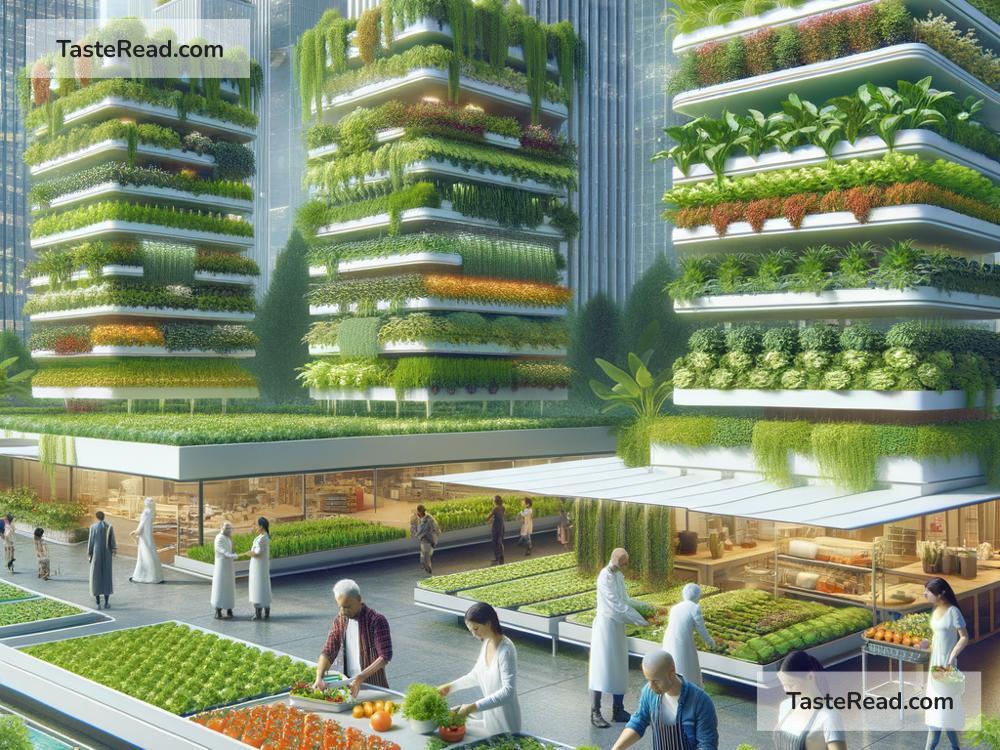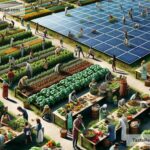The Future of Food and Holistic Community Systems
The world is changing rapidly, and so is the way we think about food and communities. Issues like climate change, population growth, and limited natural resources make it clear that we cannot keep using old ways of producing and eating food. At the same time, many communities are struggling with poor health, inequality, and isolation. To solve these big problems, we need fresh ideas that connect food and community in smarter, more holistic ways. Let’s explore what the future might look like if we focus on creating better food systems and stronger, healthier communities.
Rethinking Food Production
In the past, most of our food came from large farms, factories, and grocery stores. These systems often focus on producing lots of food quickly and cheaply, but there are downsides. Industrial farming uses harmful pesticides that pollute our land and water, animal factories create poor living conditions, and transportation systems burn fossil fuels that hurt the planet.
The future offers exciting alternatives. One idea is vertical farming, where crops grow indoors in towers or stacked layers under controlled conditions. This method uses less land and water while producing fresh food year-round. Imagine walking into a neighborhood building where lettuce, strawberries, and herbs grow just steps away from you. This could dramatically reduce the time and fuel needed to transport food.
Another innovation is lab-grown or “cultured” meat. Scientists are developing ways to grow actual meat from animal cells without farming animals. This process could help reduce greenhouse gas emissions and decrease land use, while still giving us the meat we enjoy.
Meanwhile, other future systems focus on using technology to make farming more sustainable. Precision agriculture, for example, uses drones, sensors, and artificial intelligence to monitor plants and soil closely. Farmers can grow food more efficiently, using only the resources they truly need.
Building Holistic Communities
As food systems evolve, so too do the communities where we experience food. Today, many neighborhoods lack access to fresh, healthy foods. This is often called a “food desert.” At the same time, people are more isolated than ever due to technology, busy schedules, and urban living. To address these challenges, communities are starting to focus on holistic approaches that combine food access, health, and connection.
For example, community gardens are becoming more popular. These are shared spaces where people grow vegetables, fruits, and herbs together. A community garden helps neighbors access fresh food, teaches them gardening skills, and creates opportunities to connect with others. Imagine working every week alongside your neighbors to grow a bountiful supply of tomatoes, cucumbers, and spinach, then sharing that food at a block party. That’s the power of connection through food.
Some cities are also creating “food hubs.” These are centralized locations where farmers, local producers, and consumers come together. The idea is to support small-scale businesses while making fresh, locally grown food easy to access. A food hub might host farmers’ markets, cooking classes, or even composting stations.
Technology plays a role here as well. Platforms like apps can connect people with excess food to those who need it. Some systems even allow individuals to share meals with others in their communities, reducing waste and building friendships. The future holds exciting possibilities for leveraging technology to help us eat smarter and build stronger human networks.
Healthier, Smarter Choices
As we rethink food and community systems, encouraging healthier choices will be critical. Right now, many people rely on unhealthy processed foods because they are cheap and convenient. While these foods give us quick meals, they often lack proper nutrients and contribute to diseases like diabetes and heart problems.
In the future, healthier eating will be easier and more accessible. Imagine food stores focused entirely on plant-based meals or offering affordable grab-and-go options packed with fresh vegetables and whole grains. Schools and workplaces could use food systems that prioritize nutrition, giving kids and employees meals that fuel their bodies and brains instead of loading them with sugar.
Education also plays a big role. Teaching people how to grow food, cook simple meals, and make nutritious choices is key. Programs in schools and communities can show children the fun of planting seeds and cooking veggies, helping them develop lifelong healthy habits.
Looking Ahead
The future of food and communities is about much more than simply eating or growing things. It’s about creating systems that connect us with our neighbors, prioritize health, and protect the planet. By combining ideas like vertical farming, community gardens, food hubs, and technology, we can build a future where everyone has access to fresh, sustainable food and feels supported by a strong, caring community.
Change will not happen overnight. It will take teamwork across governments, businesses, and individuals to reshape how we think about food and community systems. But with creativity and collaboration, we can look forward to a world where both people and the planet thrive.
So, the next time you dig into a plate of food, remember: the choices we make today will shape the future of food tomorrow. Let’s work together to ensure that future is bright, healthy, and connected—for everyone.


